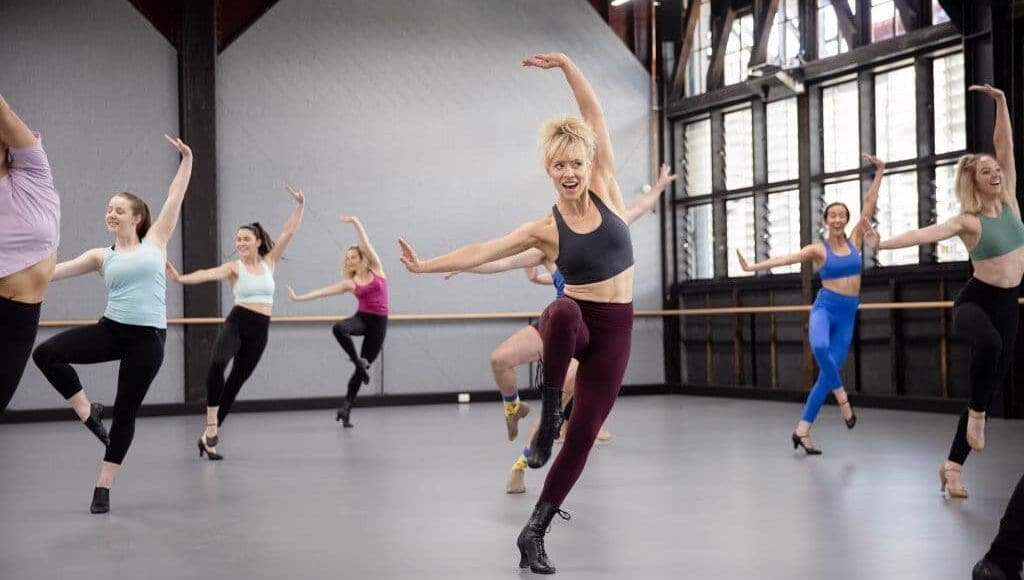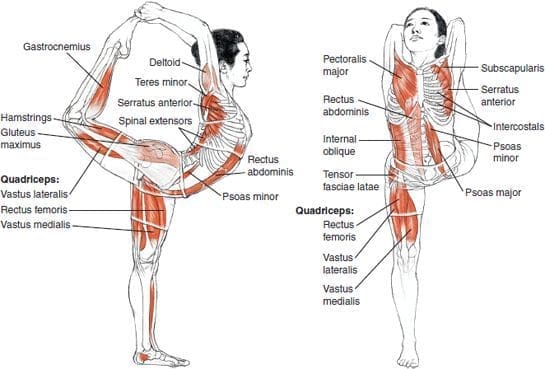Table of Contents
Introduction
Everyone is trying to find what exercise works for them as they start looking for ways to improve their health and wellness. Many individuals who begin to work out would go with finding a personal trainer or a gym that helps incorporate muscle strength training and cardio training to improve their heart and lung capacity to make the body feel good while strengthening their muscles. One of the unique forms of exercise that involve both the heart and muscles is dancing. Dancing is a great way to not only improve musculoskeletal and cardiovascular health but can help reduce overlapping conditions that a person is dealing with in their bodies. Today’s article looks at how dancing helps with musculoskeletal health, affects the heart and brain, and how chiropractic care goes hand in hand with dancing. We refer patients to certified providers specializing in musculoskeletal and cardiovascular therapies to help those with heart and muscle issues. We also guide our patients by referring to our associated medical providers based on their examination when it’s appropriate. We find that education is the solution to asking our providers insightful questions. Dr. Alex Jimenez DC provides this information as an educational service only. Disclaimer
Dancing For Musculoskeletal Health
Have you ever noticed people take a cardio class with music playing in the background and see them happy afterward? How do athletes incorporate cardio into their exercise regime to improve their mobility and flexibility? Or how do particular video games make you get up and move around? All these scenarios imply that cardio exercises like dancing may help improve musculoskeletal function. Dancing is one of the many aerobic exercises that can help improve a person’s social skills and is something that can be taken up early while providing many beneficial qualities like:
- Increase strength
- Improve gait and balance
- Reduce functional loss
- Reducing the risk of falls
- Rehabilitating musculoskeletal injuries
- Stabilize core muscles
For the musculoskeletal system, dance would be considered an isometric exercise involving different muscle groups like the hips, shoulders, back, and abdominals without using the joints. When a person is dancing, each of the various movements is related to strengthening the core muscles by working thoroughly with the abdominals. Dance can even help improve posture by maintaining strength and enhancing stability in the body. Studies reveal that dance’s impact on individuals with chronic issues like Parkinson’s disease associated with motor and non-motor symptoms can increase their quality of life. So what does that mean? It means that dancing, even for just one song, can help with movement and foster balance, flexibility, and muscle endurance through repeated tasks while associating with accessible, social, and attractive aspects of a person’s physical abilities.
How Does Dancing Affect The Heart and Brain?
Dancing not only helps with musculoskeletal issues, but it can help improve brain and heart function in the body. Studies reveal that moderate-intensity dancing was inversely associated with a reduced risk for cardiovascular disease mortality. What dancing does to the heart is that it makes the body intake more oxygen to the lungs, which relates to the heart beating faster and circulating the blood to be transported throughout the entire body. But how does dancing correlate to brain health? Let’s look at dance fitness classes, like Zumba, and use it as an example. Studies show that dance fitness classes provide several health benefits that could reduce mood disorders like depression and anxiety while improving cognitive skills. This means that dance fitness classes like Zumba do repetitive movements to the beat of the music that engages the individual to repeat the steps while having fun. When the muscles begin to do repetitive movements, this motor function sends the signal to the brain, making the person remember the movements later, known as muscle memory. When an individual suffers from neurological disorders like dementia or Alzheimers, dancing could potentially be involved with music therapy, allowing the individual to reduce the risk of developing neurological disorders from progressing further.
How Does The Body React To Dancing?-Video
Have you felt terrific after listening to a good song? How about feeling like you just had a workout? Or have you noticed certain areas in your body like your abdominals, legs, and back looked more toned? All these are beneficial signs that you should add dancing to your regime. The video explains what happens to the body when people are dancing. Dancing could potentially be a mediator for many athletes that play sports.
An example would be football and ballet. How do football and ballet relate to each other? Football utilizes efficient and precise movements that benefit every position on the field, while ballet requires speed to make them flawless on stage. Combining the two, many football players will increase their speed and agility associated with ballet to avoid tackles, jump higher, catch passes and avoid injuries on the field. Dancing is an excellent way to get some cardio exercises in, and combined with other treatments can make a difference in a person.
Chiropractic Care & Dancing
Like all athletic individuals, professional dancers utilize various treatments to recover and improve their performance. Treatments like chiropractic care are safe, effective, and widely used by young and professional athletes that want to prevent injuries from progressing. Chiropractic care for professional athletes and the general population can help prevent and treat injuries like back and neck pain or aggravating conditions like sciatica through spinal manipulation. Chiropractic care also helps restore an individual’s original well-being while increasing their strength, flexibility, and mobility. By working with an experienced chiropractor, an individual can regain their stamina by adopting new ways to prevent injuries caused by spinal complications from reoccurring in the body.
Conclusion
Dancing for 30 minutes to an hour can be used as part of an exercise regime and could potentially reduce chronic issues that affect the body’s brain, heart, and muscles. Dancing could also enhance a sports athlete’s performance by increasing their agility, endurance, and performance. Combined with chiropractic care, individuals will begin to see improvements in their range of motion, flexibility, and even an increase in their brain function to dance longer and improve their health and wellness. So whether you are a professional or not, dancing is for everyone.
Reference
Barranco-Ruiz, Yaira, et al. “Dance Fitness Classes Improve the Health-Related Quality of Life in Sedentary Women.” International Journal of Environmental Research and Public Health, MDPI, 26 May 2020, https://www.ncbi.nlm.nih.gov/pmc/articles/PMC7312518/.
Ferchak, Dawn. “Belly Dance Your Back Pain Away – Spineuniverse.” Spine Universe, 14 Oct. 2020, https://www.spineuniverse.com/wellness/exercise/belly-dance-back-pain.
Gyrling, Therese, et al. “The Impact of Dance Activities on the Health of Persons with Parkinson’s Disease in Sweden.” International Journal of Qualitative Studies on Health and Well-Being, Taylor & Francis, Dec. 2021, https://www.ncbi.nlm.nih.gov/pmc/articles/PMC8547839/.
Merom, Dafna, et al. “Dancing Participation and Cardiovascular Disease Mortality: A Pooled Analysis of 11 Population-Based British Cohorts.” American Journal of Preventive Medicine, U.S. National Library of Medicine, June 2016, https://pubmed.ncbi.nlm.nih.gov/26944521/.
Disclaimer
Post Disclaimer
Professional Scope of Practice *
The information on this blog site is not intended to replace a one-on-one relationship with a qualified healthcare professional or licensed physician and is not medical advice. We encourage you to make healthcare decisions based on your research and partnership with a qualified healthcare professional.
Blog Information & Scope Discussions
Welcome to El Paso's Premier Wellness and Injury Care Clinic & Wellness Blog, where Dr. Alex Jimenez, DC, FNP-C, a board-certified Family Practice Nurse Practitioner (FNP-BC) and Chiropractor (DC), presents insights on how our team is dedicated to holistic healing and personalized care. Our practice aligns with evidence-based treatment protocols inspired by integrative medicine principles, similar to those found on this site and our family practice-based chiromed.com site, focusing on restoring health naturally for patients of all ages.
Our areas of chiropractic practice include Wellness & Nutrition, Chronic Pain, Personal Injury, Auto Accident Care, Work Injuries, Back Injury, Low Back Pain, Neck Pain, Migraine Headaches, Sports Injuries, Severe Sciatica, Scoliosis, Complex Herniated Discs, Fibromyalgia, Chronic Pain, Complex Injuries, Stress Management, Functional Medicine Treatments, and in-scope care protocols.
Our information scope is limited to chiropractic, musculoskeletal, physical medicine, wellness, contributing etiological viscerosomatic disturbances within clinical presentations, associated somato-visceral reflex clinical dynamics, subluxation complexes, sensitive health issues, and functional medicine articles, topics, and discussions.
We provide and present clinical collaboration with specialists from various disciplines. Each specialist is governed by their professional scope of practice and their jurisdiction of licensure. We use functional health & wellness protocols to treat and support care for the injuries or disorders of the musculoskeletal system.
Our videos, posts, topics, subjects, and insights cover clinical matters and issues that relate to and directly or indirectly support our clinical scope of practice.*
Our office has made a reasonable effort to provide supportive citations and has identified relevant research studies that support our posts. We provide copies of supporting research studies available to regulatory boards and the public upon request.
We understand that we cover matters that require an additional explanation of how they may assist in a particular care plan or treatment protocol; therefore, to discuss the subject matter above further, please feel free to ask Dr. Alex Jimenez, DC, APRN, FNP-BC, or contact us at 915-850-0900.
We are here to help you and your family.
Blessings
Dr. Alex Jimenez DC, MSACP, APRN, FNP-BC*, CCST, IFMCP, CFMP, ATN
email: coach@elpasofunctionalmedicine.com
Licensed as a Doctor of Chiropractic (DC) in Texas & New Mexico*
Texas DC License # TX5807
New Mexico DC License # NM-DC2182
Licensed as a Registered Nurse (RN*) in Texas & Multistate
Texas RN License # 1191402
ANCC FNP-BC: Board Certified Nurse Practitioner*
Compact Status: Multi-State License: Authorized to Practice in 40 States*
Graduate with Honors: ICHS: MSN-FNP (Family Nurse Practitioner Program)
Degree Granted. Master's in Family Practice MSN Diploma (Cum Laude)
Dr. Alex Jimenez, DC, APRN, FNP-BC*, CFMP, IFMCP, ATN, CCST
My Digital Business Card




